
Order Confirmed
We’re sorry, the page you requested could not be found.
Carlos Zevallos of Comvita leaves behind the world of New Zealand Mānuka honey to help set up new hives in Kenya, Africa, as part of Comvita’s Saving the Wild Beekeeping project.
Blog By Carlos Zevallos, Head of Apiary Development, Comvita New Zealand
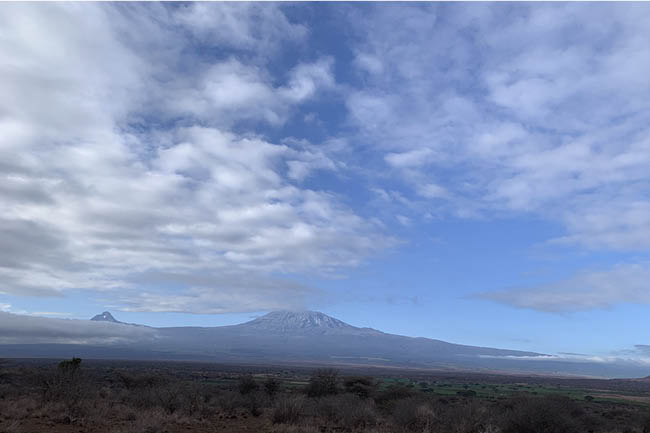
My adventure began on Sunday, October 30, as I left Whanganui in Aotearoa New Zealand to fly to Sydney Australia, followed by another flight to Johannesburg and finally, to Nairobi, Kenya - a total of 24 hours flying time. There, I met Jamie Joseph, the intrepid and passionate founder of Saving the Wild. Once we arrived in Nairobi, there was more travel in store: a four-hour taxi trip to the Amboseli Bush Camp in Kimana, Kenya.
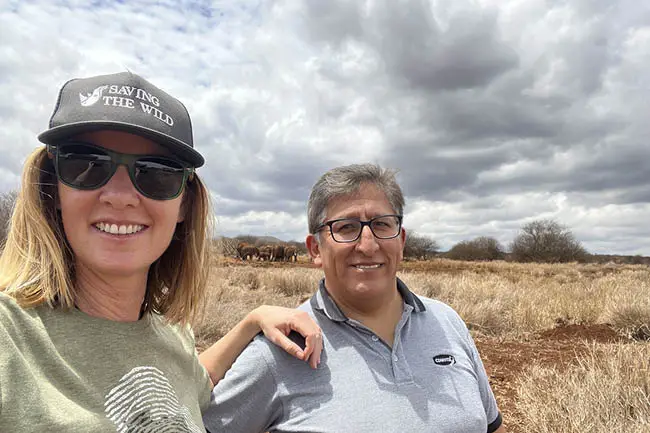
En route to our destination, we met the truck delivering the beekeeping equipment we had requested for the Kimana beekeeping project. Arriving at the Amboseli Bush Camp, an amazing welcoming committee was waiting for us - a herd of elephants drinking water in a well created especially for wild animals. It was my first time observing wildlife in Africa Kenya, and I was very excited by such a spectacular sight, but deeply saddened at the same time because of the long drought the region has suffered. I learnt from Jamie’s experience that many hungry animals have died in the current drought conditions.
During the first evening as I established myself in the camp, after unloading the hives from the truck, a tired and hungry zebra arrived at the water source. Soon after, it collapsed with exhaustion and hours later it would die in front of our eyes: a sad and stark reminder of the vital need to protect and heal our world.
All of the new beekeeping equipment was placed inside the apiaries – a simple structure with metal mesh walls and a roof. This is where the colonies of bees from the Kimana project were located, to safeguard them from the rain that was expected after a long drought of more than six months – and began just as I arrived. The rain came with lightning and thunder but only lasted one day until once again, the burning sun began to dry everything around us.
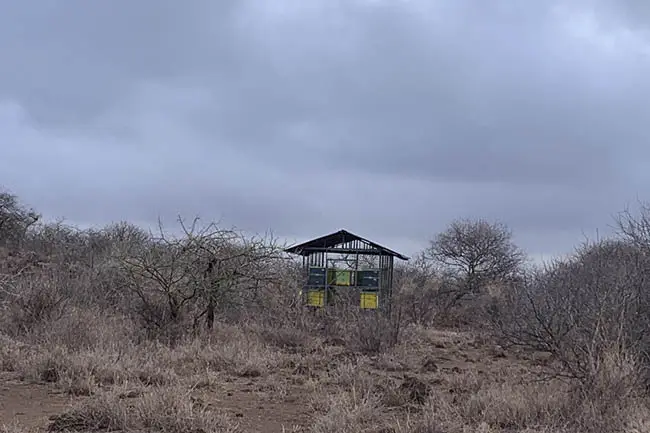
The next day we went back to the apiaries to inspect the colonies and to transfer each colony inside rustic boxes to the new boxes that had been acquired. We headed to the first apiary and some guard bees were already beginning to surround us, so it was time to put on our veils. At first, as I had always wanted to see how far I could work without gloves, I decided to enter without them, but my audacity would cost me a few stings in my hands before opening the first colony. It was then that I realized that with African bees there is no need to be daring – ‘gloves on’ was the order of the day!
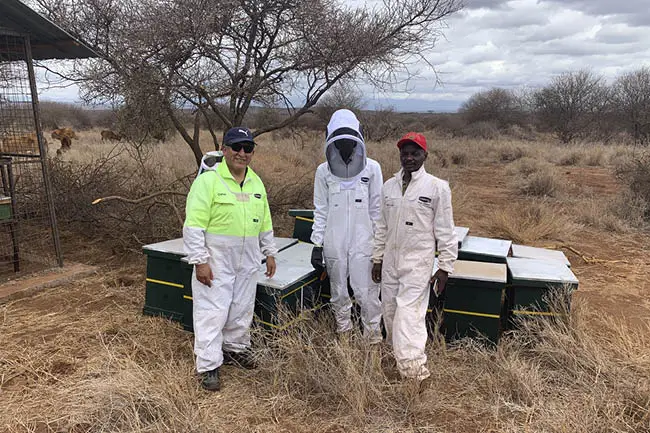
We began inspecting the colonies very early at 7am in the morning for two hours and then again in the afternoon from 5pm until the sun went down. In the mornings, we could only work until 9am because the activity of the bees increased as the temperature rose, which meant more bees trying to enter our protective suits. We managed to check 15 colonies in one day and continued the next day.
A hungry, honey badger thwarts our first attempt.
A surprise awaited us at dawn the next day: a honey badger had broken the security of the apiary house and a colony had sadly been destroyed. It was then that we decided to change our strategy.
Rather than transferring the colonies from the rustic boxes to the new ones we had ordered, we limited ourselves to checking the conditions of the breeding chamber and added more honey to the colonies so that when the rains return and more abundant pollen and nectar is available, the bees can start weaving honeycombs on the new supers. Suffice to say, we also ensured that the honey badger could never get in again.
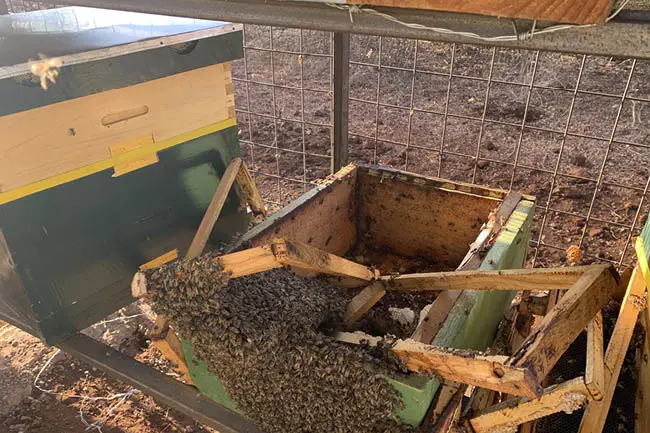
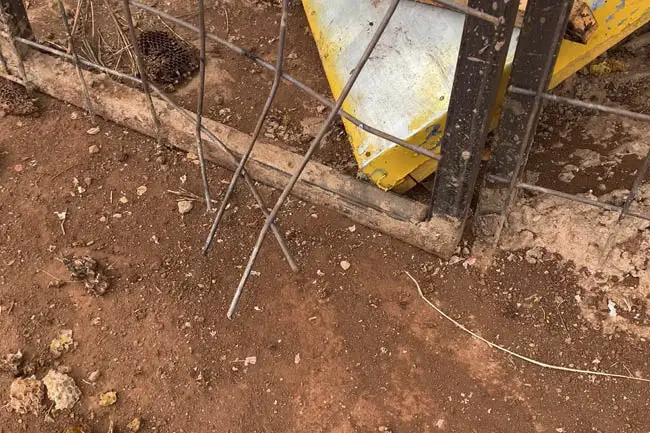
Most of the colonies are beginning to breed and we are hoping that this will increase with the arrival of the rains, which will bring the return of the abundant plant life required for bees’ reproduction and maintenance. It was a good decision not to harvest the honey in the previous season, as that has contributed to the sustainability of the colony – also helped by Kylonzo, the local beekeeper, who has been feeding the bees sugar mixed in water during the drought.
We hope the advent of laying the queen bees in most of the colonies is a good prediction for the end of the drought in this region of Africa. But what surprised me the most was observing honeycombs with brood, but without the presence of pollen inside the colony. Is it a special feature that these African bees from Kenya have? I will surely have that answer over the coming days as I learn more about the environment of this wild and beautiful region and meet the local women who will take on the challenge of tending these hives in the near future.
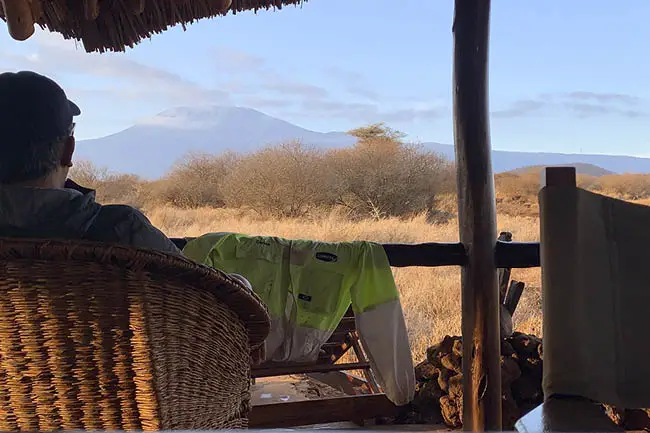
At Comvita, one of our core values is guardianship and we believe in working in harmony with bees and nature to help protect the land. Our partnership with Saving the Wild is part of our Harmony Plan. The Saving the Wild Beekeeping Project, is about helping restore and strengthen the delicate balance between humans and nature, whilst generating positive social outcomes in our global communities. And we are starting in the Kimana Wildlife Corridor.
Discover the difference of our Manuka Honey, learn the latest health and wellness tips, find recipes and more.

We’re sorry, the page you requested could not be found.